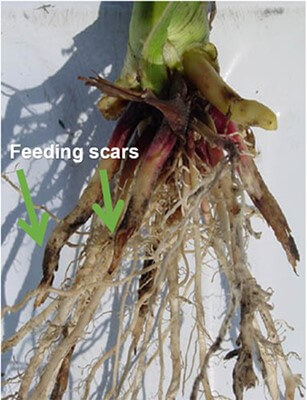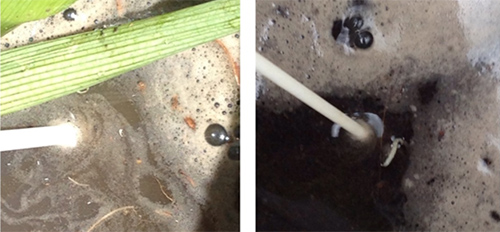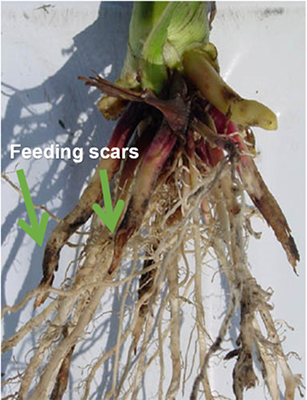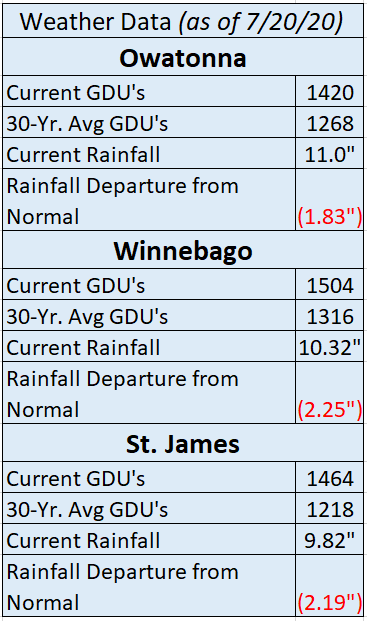2020.07.23 Growing Insights
Jul 23, 2020

|
|||||||
| Corn Rootworm Lifecycle |
| With some of the storms that have dotted the countryside the last few weeks as corn finished tasseling, it has uncovered a somewhat hidden pest until now. Some corn fields that had more “goose-necking” or lodged corn after wind events pointed us to spots to spend some extra time in scouting, and we were able to find the presence of corn rootworm pests! Both Northern and Western corn rootworms produce one generation per year. Overwintering eggs are about 50% hatched when soils have accumulated 684 to 767 GDU’s. The larvae will begin to feed immediately on corn roots! The carbon dioxide emissions from root tips are what actually helps the larvae find their food. Rootworm larvae go through three growth stages as they feed on corn roots. After the third phase, they will transition from larvae to beetles (which lasts 1-2 weeks), leading to adult beetles emerging from the soil around mid-July to feed on silks and leaves (males will emerge first, then females). First instars are small (less than 1/8” long), and they get as big as a ½” long by the 3rd instar.  The main concern with rootworm feeding is the damage they do to the root system.
In order to diagnose the damage corn rootworm larvae have caused below ground, it’s best to dig up about an 8” cube around the corn root, place it in a 5-gallon bucket of water, break apart the soil, and wait for larvae to float to the top of the water. 2nd and 3rd instars are usually the most visible when floating roots.  Once you have the roots washed, then you can inspect for early-season damage and feeding scars like the image below.  It’s also important to know the levels of adult rootworm beetles that are in the field that can lay eggs this year, especially if the field is being considered to be planted to corn again. Using yellow sticky traps to collect beetles, you can determine the level of rootworm beetles to make economic decisions about controlling beetles with a late-season insecticide or rotating to a different crop the following year. Thresholds vary by state and university, but the economic threshold between 2-5 beetles per trap/day would signify the potential of significant yield loss the next season in continuous corn if no control tactics are used. Contact your local CFS representative if you have corn acres that you would like to determine the level of corn rootworm pressure to make more informed decisions for your crop rotation next year! |

